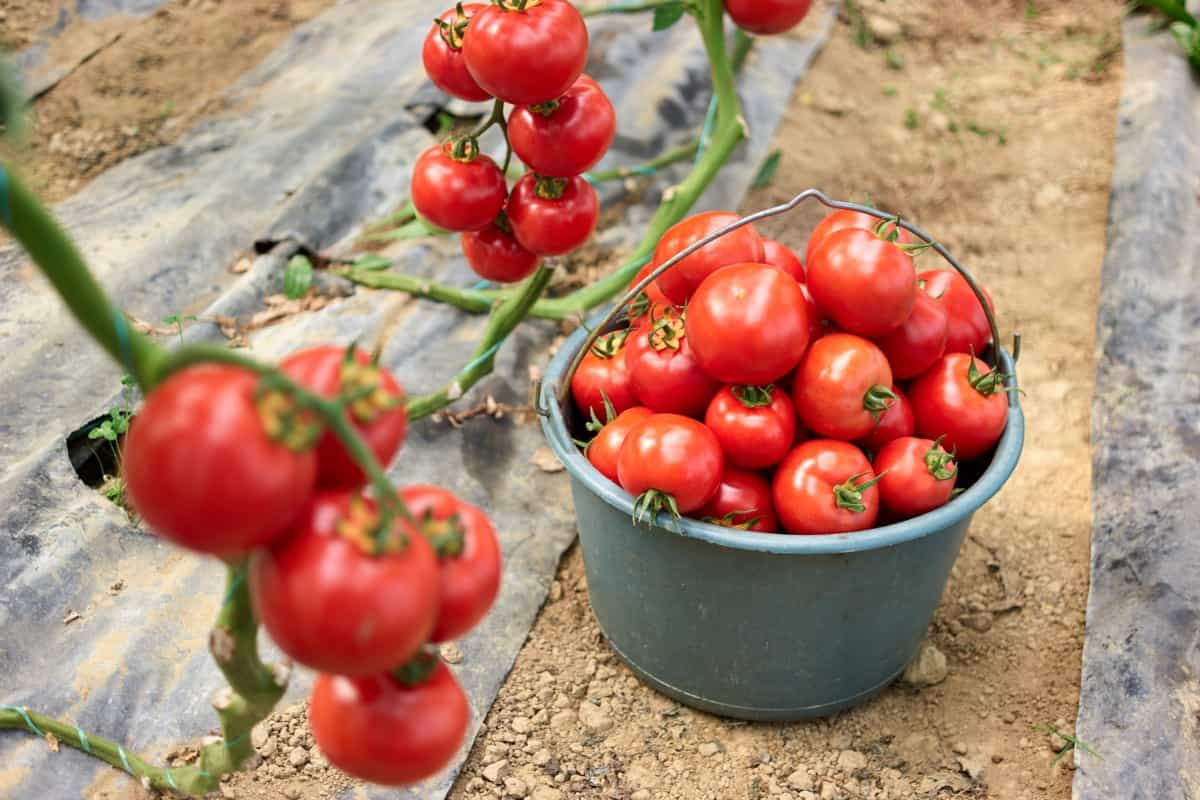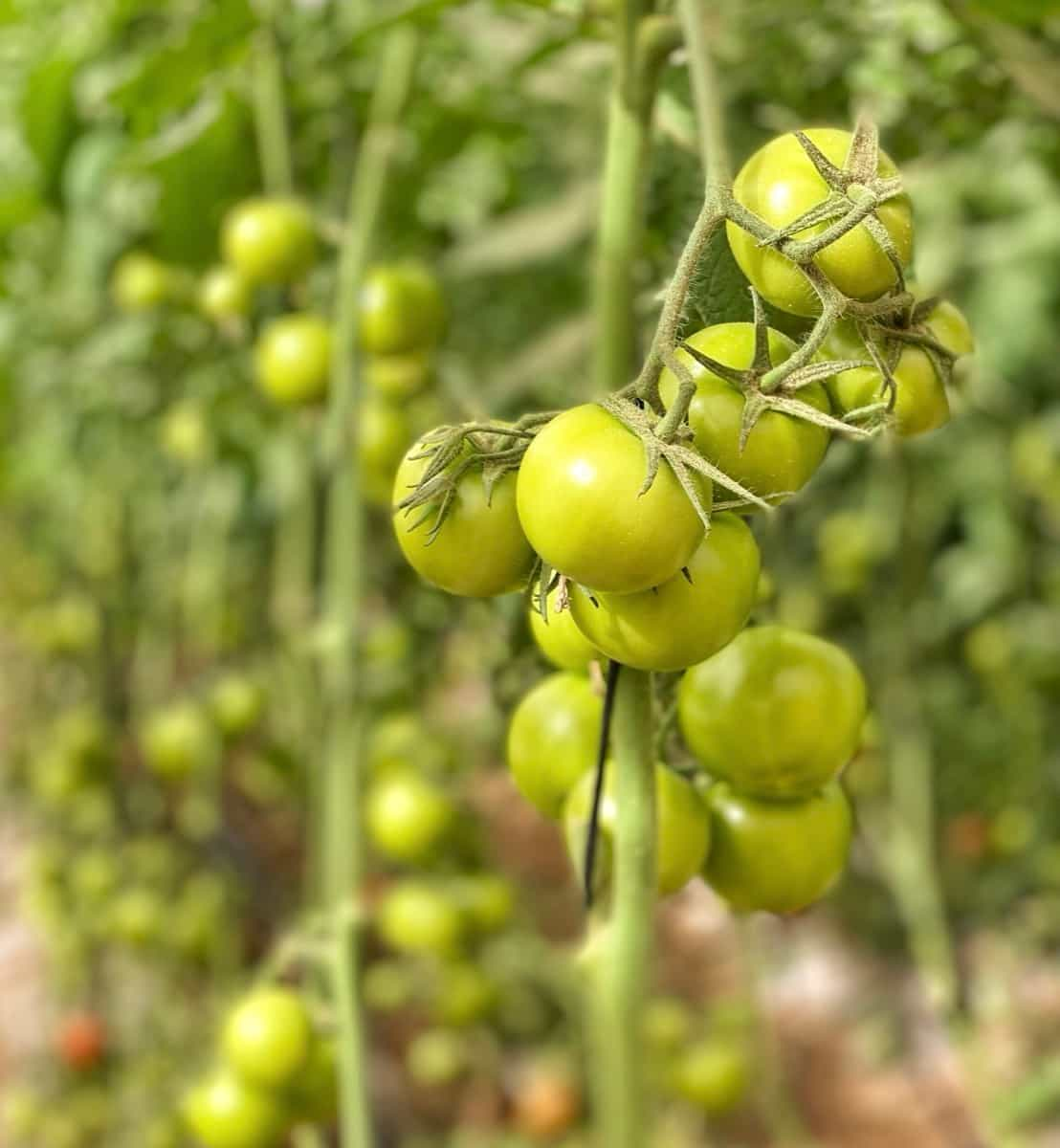Tomato farming in the fall is a rewarding endeavor for those looking to enjoy the freshness of home-grown tomatoes during the cooler months. Knowing how to grow tomatoes in pots, how to make tomato plants grow faster, and how to grow tomatoes at home from seeds are essential skills for succeeding in this task.

This guide is an excellent resource for growing tomatoes for beginners and seasoned gardeners alike, offering detailed instructions on how to plant tomatoes in the ground, choose fall tomato varieties, and understand how long it takes tomatoes to grow from seed. Get ready to embark on your fall tomato farming journey with valuable insights and practical tips tailored for the cooler months.
Tomato Farming in the Fall
When and How to Plant
Planting tomatoes in the fall requires a bit of strategic planning. The key is choosing the right time when the temperature is moderate, ensuring the plants aren’t exposed to early frosts or extreme cold. To begin, you can start by figuring out how to grow tomatoes at home using seeds.
Choose suitable fall tomato varieties known to thrive during the cooler months. Once the seeds are ready and the external conditions are favorable, you can proceed on how to plant tomatoes in the ground. Ensure the chosen area receives adequate sunlight and is well protected from strong winds and frost.
Prepare the Soil
The soil must be rich in organic matter, well-drained, and with a neutral pH. Adding compost or well-rotted manure can enhance soil fertility and provide the necessary nutrients for the plants. The method of making tomato plants grow faster heavily relies on the soil quality in which they are planted. Make sure the soil is loose and free of weeds, facilitating easy root penetration and growth. Proper soil preparation is fundamental in growing tomatoes for beginners, helping establish a strong plant foundation.
Best Varieties
Some fall tomato varieties are specifically bred to resist the lower temperatures and shorter daylight hours of the fall. These varieties tend to mature faster, catering to the limited growing season. Knowing these varieties is essential in understanding how long it takes tomatoes to grow from seed during these cooler months. Look for varieties that are resistant to diseases and can thrive in the temperatures of your specific region.
In case you missed it: Effective Strategies for Tomato Grafting: Benefits, Techniques, and Varieties to Consider

Provide Support
Providing support to your tomatoes is essential as it helps keep the plants upright, ensuring that they receive adequate sunlight and air circulation. Supports such as cages and stakes are commonly used. To make tomato plants grow faster, it’s important to give them proper support to stop them from tipping or getting too crowded. Even when you are learning how to grow tomatoes in pots, adequate support is necessary to manage the plant’s growth effectively and ensure that the fruits do not touch the soil and are less prone to pests and diseases.
Watering and Irrigation Requirements
The plants need consistent moisture levels to grow well. Too much or too little water can harm the plants, affecting their health and productivity. When considering how to plant tomatoes in the ground, it’s crucial to plan an effective watering or irrigation system. Ensure the water reaches the roots, encouraging a healthy root system, but avoid waterlogging the soil. Learning the proper watering techniques is a helpful aspect when growing tomatoes for beginners, as it promotes healthy plants and abundant harvests.
Fertilizing
Using a balanced fertilizer that is not too high in nitrogen can help improve the plant’s health and fruit production. Knowing how to make tomato plants grow faster includes mastering the art of proper fertilization, as it directly impacts the plant’s growth and the quality of the tomatoes produced. Make sure the fertilizer spreads evenly in the soil and reaches plant roots so they can absorb it best.
Diseases and Pests
Implementing natural methods can help in managing the common issues that affect tomato plants. Using neem oil, introducing beneficial insects, and ensuring proper sanitation are effective ways to control pests and diseases. Understanding how to manage these problems is essential when growing tomatoes for beginners, providing them with the necessary tools to maintain healthy and thriving plants during the fall season. Regular monitoring and early intervention are key in preventing major infestations and diseases that could adversely affect the crop.
Harvest
Harvesting usually depends on the variety of tomatoes you’ve planted and the weather conditions they have been exposed to. When the tomatoes have reached their full color and are slightly soft to the touch, they are generally ready to be picked. It’s essential not to wait too long as overripe tomatoes can attract pests or may suffer from rot. Harvesting in the cool morning hours is advisable as it helps in preserving the flavor and freshness of the tomatoes. Ensure you handle them gently to prevent any bruises or damages, which can affect their shelf life and quality.
In case you missed it: Tomato Farming with Biodynamic Practices for Better Crop Health and Yield

Storing Techniques
Keep the tomatoes at room temperature if they are to be consumed within a few days. Avoid storing fresh tomatoes in the refrigerator, as it can affect their texture and taste. For longer preservation, you can consider canning, drying, or freezing the tomatoes. Canning is a popular method that involves storing the tomatoes in airtight containers, helping maintain their freshness for an extended period. Drying the tomatoes involves removing the moisture content, resulting in dried tomatoes that can be stored and used over several months.
Winterize Your Tomato Plants
Begin by removing any remaining tomatoes from the plants, including the unripe ones. The next step involves cutting back the plants and removing any dead or diseased foliage. It’s essential to clean up the growing area, get rid of any plant debris, and disinfect the tools and supports used. You can also protect the plants by applying mulch to the base, which helps maintain soil temperature and moisture levels. Ensuring your plants are adequately prepared for winter is crucial in maintaining their health and ensuring a successful crop in the following season.
In case you missed it: Tomato Farming with Mulch: How to Use Organic Materials for Better Soil Health and Yield

How do You Grow Tomatoes in the Winter?
Growing tomatoes in winter requires a warm, controlled environment like a greenhouse. Maintain appropriate temperature, adequate light, and proper care to support the plant’s growth during the colder months.
Conclusion
By employing meticulous methods in planting, nurturing, and protecting the plants, one can enjoy bountiful and delicious tomatoes even in the cooler months.
- Feed Your Flock for Less: Top 10 Tips to Save on Chicken Feed
- Ultimate Guide to Ossabaw Island Hog: Breeding, Raising, Diet, and Care
- Hatching Answers: The Top 10 Reasons Your Chickens Aren’t Laying Eggs
- Eggs and Economics: Breaking Down the Cost of Raising Backyard Chickens
- Defend Your Greens: Proven Methods to Keep Iguanas Out of Your Garden
- Ultimate Guide to Cinnamon Queen Chicken: A Comprehensive Guide for Beginners
- Ultimate Guide to California Tan Chicken: Breeding, Raising, Diet, Egg-Production and Care
- Ultimate Guide to Marsh Daisy Chicken: Breeding, Raising, Diet, and Care
- 10 Types of Chicken Farming Businesses You Can Start for Profits